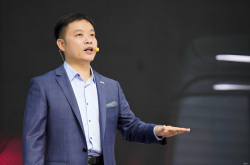Why Are Young Consumers Turning Away from 4S Dealerships?
![]() 11/17 2025
11/17 2025
![]() 475
475
Projected Annual Net Decline in 4S Dealerships Approaches 1,500
"Once my car's warranty expired, I completely stopped going to 4S dealerships," said Ms. Sun, a post-90s car owner whose decision is quite typical. Now, she compares options and places orders on third-party car maintenance platforms. "The experience is more like online shopping—it's close to home, the service is just as good as at 4S dealerships, and the prices are more competitive."
Amid declining profitability from car sales, many 4S dealerships have pinned their hopes on growth in after-sales repair services. However, shifts in consumer behavior have caught 4S dealerships off guard. Data from the China Automobile Dealers Association (CADA) reveals that in the first half of 2025, the number of 4S dealerships nationwide fell from 32,000 to 31,400, a net decrease of 650, with 2,749 dealerships leaving the network. Lang Xuehong, Deputy Secretary-General of CADA, predicts that if this trend persists, the annual net reduction of 4S dealerships will reach around 1,500.
At the CADA Annual Conference on November 6, Xiao Zhengsan, the association's president, stated bluntly that China's auto dealers are facing unprecedented challenges in survival and development. He noted that the traditional model of relying on inventory pressure or forced price cuts to gain market share and sales growth, along with established industrial chain business cooperation models and supply chain structures, can no longer fully meet the requirements of high-quality development in the automotive market. Industry transformation is inevitable.
Traditional 4S Dealerships Face Significant Hurdles
Data indicates that in the first half of 2025, over half (52.6%) of dealers incurred losses, while only 29.9% achieved profitability. A staggering 74.4% of dealers faced price inversions, with 43.6% experiencing inversion rates exceeding 15%. The gross profit margin from new car sales plummeted to -22.3%, leading to widespread losses.
This contraction is most evident in the traditional fuel vehicle sector. From marginal joint venture brands like Chevrolet and Skoda to mainstream joint venture brands such as Honda and Nissan, and even luxury brands like BBA (BMW, Mercedes-Benz, Audi) and Jaguar Land Rover, all have initiated plans to downsize their channels. Industry "slimming" has become unavoidable.
The primary challenges currently facing dealers include stagnant growth in customer traffic, a continuous decline in walk-in customers, and low conversion rates for online leads; persistent price inversions exacerbated by slow sales of older models; and sharply declining profitability, leading to a vicious cycle.
Cui Dongshu, Secretary-General of the China Passenger Car Association (CPCA), stated that widespread losses in new car sales have left dealers with a cash flow deficit, increasing the risk of a capital chain breakdown. Under the dual pressure of weak consumer demand and manufacturer wholesale targets, dealers are facing severe inventory backlogs. To alleviate financial pressure, they are forced to sell new cars at low prices, creating a dilemma where "the more they sell, the greater their losses." Simultaneously, difficulties in fulfilling financing obligations upon maturity have increased, with existing working capital nearing its support limit, making survival increasingly challenging.
Cui Dongshu believes that the automotive 4S dealership industry is undergoing unprecedented structural upheaval. The continuous contraction of the traditional fuel vehicle market, compounded by the impact of new energy vehicles (NEVs) surpassing 55% market penetration, has completely reshaped the industry ecosystem. Transitioning to NEVs has become a matter of survival for dealers.
Against this backdrop, leading 4S groups such as Zhongsheng Group, Yongda Auto, and Harmony Auto are adjusting their strategies by embracing NEV brands through measures like converting to Huawei Smart Selection stores and exclusive agency agreements with BYD, actively seeking a second growth curve.
Industry data also underscores the necessity of transitioning to NEVs: In the first half of 2025, dealers of independent NEV brands significantly outperformed those of traditional fuel vehicle brands. Among NEV dealers, 42.9% were profitable, 22.7% broke even, and 34.4% incurred losses. In contrast, only 25.6% of traditional fuel vehicle brand dealers were profitable, 15.8% broke even, and a staggering 58.6% incurred losses.
Xiao Zhengsan noted that dealers of luxury, joint venture, and domestic brands currently face widespread issues such as irrational network layouts, insufficient profitability, and strained manufacturer-dealer relationships. Overall, they are operating at low profit margins or even incurring losses. The root cause lies in an oversupply of dealerships, high inventory levels, and price inversions resulting from an imbalanced supply-demand structure.
Is the Shopping Mall Model a Superior Choice?
Unlike traditional 4S dealerships located on the outskirts of cities, which require consumers to plan dedicated visits, shopping mall stores seamlessly integrate car displays into everyday consumption scenarios. Young people can conveniently view, consult, and order vehicles while shopping, significantly reducing the time and spatial costs associated with car purchases. This convenience precisely meets the fast-paced consumption demands of today.
Tesla pioneered this scenario-based marketing model in China in 2013 when it opened an experience store in Beijing's Parkview Green. The store not only became a landmark for tech enthusiasts but also successfully broke the industry's tradition of locating 4S dealerships far from core consumption areas, providing a new model for automotive sales channel innovation.
For young consumers, the appeal of shopping mall stores extends beyond convenience; it also lies in the equal and comfortable consumption atmosphere they offer. Consumers no longer need to endure the "over-selling" and "condescending" attitudes commonly associated with 4S dealership sales staff. Instead, they can freely browse, inquire, and test-drive vehicles at their own pace. This decentralized service model aligns perfectly with the consumption psychology of young people.
It is worth noting that the rise of the shopping mall model is not an isolated channel transformation but complements the online consumption ecosystem. Today, sources of automotive information have shifted from traditional car enthusiast circles to social media platforms like short videos and livestreams. Content from platforms such as Dongchedi (professional comparative reviews), Xiaohongshu (authentic owner feedback), and Bilibili (in-depth long-form test reports) enables consumers to precisely screen models before visiting dealerships. This new car-buying model of "online research followed by offline experience" has, to a certain extent, dismantled the information monopoly previously held by traditional 4S dealerships.
Of course, the development of the shopping mall model has not been without challenges. Since 2022, some automotive brands have begun closing mall showrooms and shifting resources to suburban stores with lower costs and more comprehensive functions. The primary reason is that, aside from vehicle sales revenue, most automotive shopping mall stores, due to space limitations, cannot offer stable profit-generating services such as after-sales repairs, financial services, and used car transactions. This limitation represents a significant drawback of the shopping mall model.
Nevertheless, this does not diminish the value of the shopping mall model. The industry consensus is that brands failing to adapt to the new model will exit the market, not the shopping mall model itself. This lightweight, scenario-based channel innovation precisely addresses the pain points of young consumers and has become a key strategy for the automotive industry to attract new-generation users, with broad prospects for future development.
More Diverse Aftermarket Options
Amid the rapid evolution of new car sales channels, the automotive aftermarket is also undergoing a profound structural transformation.
Traditionally, 4S dealerships dominated owners' core maintenance and repair needs due to the reliability of their parts and the professionalism of their repair techniques, firmly establishing themselves as the industry's preferred channel. However, this long-standing tradition has been disrupted by the rise of third-party automotive service providers.
The COVID-19 pandemic accelerated innovations in aftermarket service models. During this period, online searches for automotive maintenance products such as tires and engine oil surged, driving the rapid adoption of the "online booking + offline service" model. This efficient and convenient service format contrasts sharply with the relatively cumbersome traditional service processes at 4S dealerships, accelerating the iterative upgrade of industry service models.
The explosive growth and industry consolidation in the NEV market have further amplified the need for aftermarket transformation. Data shows that as of September 2025, the retail penetration rate of NEVs in China reached 57.8%, with the installed base surpassing 30 million units. However, the limited coverage of OEM-built after-sales channels, coupled with challenges such as high parts prices, complex repair techniques, and a shortage of professional technicians, has resulted in aftermarket service experiences lagging behind the growth in new car sales. Meanwhile, the industry consolidation in the NEV sector has accelerated, with once-popular brands like WM Motor, Neta, and Jidu exiting the market, further shifting the after-sales demands of their former owners to third-party service providers.
Against this backdrop, leading third-party platforms such as Tmall Auto Care, Tuhu Auto Care, and JD Auto Care have emerged. Digital features like online booking, transparent pricing, and real-time repair progress tracking better align with the consumption habits of young people. Meanwhile, their more competitive pricing and flexible service offerings have further eroded the appeal of traditional channels, driving continuous optimization of the aftermarket competitive landscape.
In response to the current industry challenges, the China Automobile Dealers Association, under the guidance of relevant authorities, has conducted extensive research on exit mechanisms. Xiao Zhengsan stated that in the next phase, the association will accelerate the promotion of model authorization contract templates for brand dealers and expedite the development of standardized industry documents for exit clauses in authorization contracts. These efforts will provide strong support for industry transformation and standardized development, facilitating high-quality upgrades in the automotive circulation sector. To keep pace with market changes, traditional automotive dealers must also proactively adjust their business strategies to find new growth opportunities amid the transformation.







